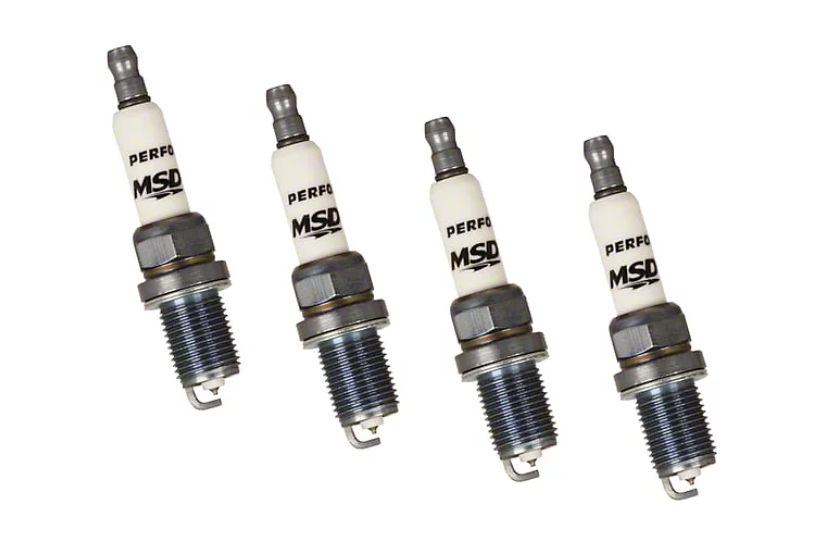
What Do Spark Plugs Do?

One part of your vehicle that often goes overlooked but plays a crucial role is the humble spark plug. Overlooked, that is, until they give out. Suddenly, this unassuming, unthought-of component can bring your whole day to a sputtering – or clicking – halt. Read on to discover the ins and outs of what spark plugs do, how they work and a range of other important tidbits that might save you from ever having to call a tow truck.
What Does a Spark Plug Do?
A spark plug is essentially an electrical gadget that fits into your engine’s cylinder head, where it “sparks” to ignite the fuel. The plug is connected to the ignition coil that generates the high voltage needed to spark the fuel and create combustion within your engine. No spark plug means no combustion, which means you won’t be going anywhere without one.
How Spark Plugs Work
Prior to ignition, life-giving fuel goes on a long journey from the gas tank. The fuel pump moves it through the fuel lines to the fuel injectors. At this point, the cold air intake portion of the engine is sucking oxygen into the cylinders, too. The fuel and air is mixed into a highly combustible state and then injected into the cylinder. There, the plug “sparks,” ignites and a small explosion takes place within the spark channel. This happens thousands of times per minute.
Here’s a quick breakdown:
- Fuel and air mix in the throttle body
- Mixture is injected into cylinder
- Spark plug receives charge from coil
- Spark plug ignites air-fuel mixture
- Process starts again
Different Electrode Types
Now that you have an idea of what’s going on under your hood, let’s touch on a few of the leading electrode materials you can choose from, some of their pros and a few things to be aware of. The most popular are iridium-, platinum-, and copper-based spark plugs. Claims that one electrode will provide more power or better fuel efficiency over another are actually anything but true. Stick with what your owner’s manual recommends, unless you want to upgrade your ride to a higher level of performance.
Of these three, copper plugs enjoy the widest use – especially in higher-performance or modified engines. Although they conduct better than iridium or platinum, they don’t have a very long lifespan. You’ll find they need to be changed every 20,000 miles or so. They are, however, the least expensive. High-octane racing applications use resistor-less copper plugs.
Iridium alloy electrodes are super-durable with an extremely high melting point (2,500°C), so they tend to last twice as long (40,000 miles) as their copper counterparts. Their conductivity is a little lower, however, so keep this in mind when considering these for modified engines. They’re also more expensive, so you might have to drop a few more bucks.
Platinum-based spark plugs, like iridium, are long-lasting with platinum boasting superior resistance to time-borne corrosion. Platinum is recommended for newer vehicles with electronic distributor-based ignition systems and some (DIS) systems.
Choosing the Right Heat Range
Let’s say, for the sake of argument, you’re exactly that kind of driver with exactly that kind of mod job in mind. Beyond knowing which type of electrode will work best for your speed-racer, you’re also going to want to know about the different heat ranges and how to choose the right one.
Contrary to popular belief, spark plugs don’t actually generate heat. Rather, they channel heat away from the copper-, iridium-, or platinum-based plug tip, the speed of which is determined by the length of the insulator mass. A spark plug with a longer insulator mass has a hot heat range, while a shorter insulator mass has a cool heat range. For a spark plug to function properly, its tip temperature should be hot enough to invoke self-cleaning but keep cool enough to avoid pre-ignition or engine knocking.
Since it’s impossible to change the temperature of how hot your fuel burns, it’s best to stay with the factory-recommended heat range. Be wary of going with a hotter-running plug, as they may mask the warning signs that point to engine damage. If you are introducing forced induction to your engine, you might benefit from selecting a colder heat range plug.
Setting the Spark Plug Gap
Now that you’ve got the right material and heat range selected, your final step is setting the proper gap before installing the spark plugs in your vehicle. Spark plug gap – that area between the center and ground electrode, where spark plug discharge is designed to take place – is essential for optimal engine performance.
Setting it requires a precise and steady hand as you check or adjust the spark plug center electrode or center electrode ceramic insulator. A larger gap demands higher voltage (pressure) for the spark to jump the distance, which should never exceed .055” unless pre-set by the manufacturer.
If you’re going forced induction (with a supercharger or turbocharger) you typically want to tighten or close the gap to prevent boost from blowing out the spark. Even if you don’t need to physically gap your plugs, it’s never a bad idea to verify that they’re all set to the same gap, because if a plug is mishandled or has accidentally been dropped, the gap could inadvertently close.